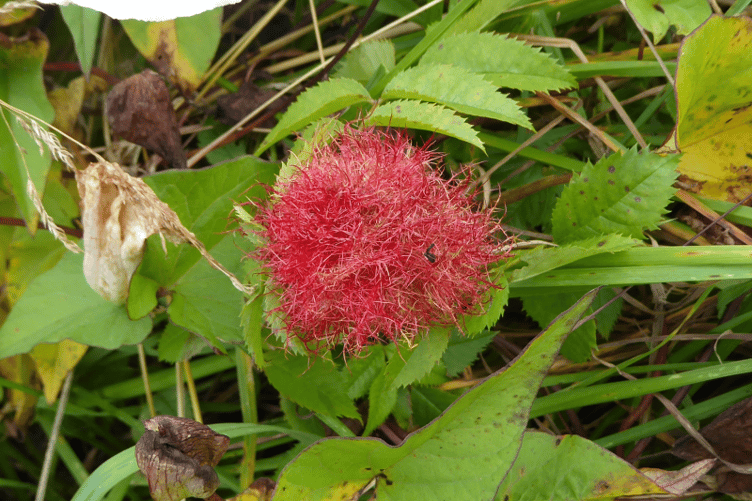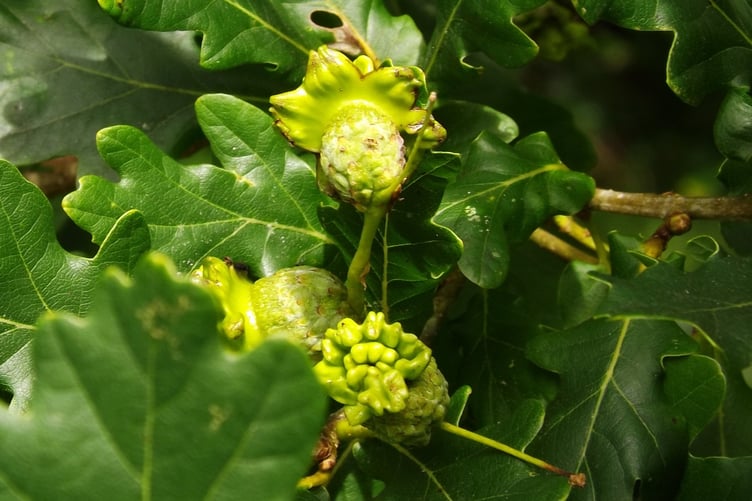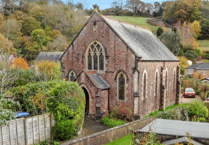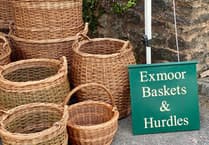This time of year on Exmoor you may notice strange blotches, lumps, bumps, spots or other markings on the fallen leaves.
Many of these are due to plant galls which are extraordinary abnormal growths and provide a fascinating subject well worth further study.
There are several hundred different galls, mainly found on various parts of flowering plants, especially on their leaves and caused by various organisms, usually insects, which lay their eggs on trees and other plants.

As the eggs hatch, chemicals produced by the larvae cause the plants to produce extra cells which can form bizarre and colourful shapes.
A variety of small insects such as wasps, flies, mites, midges, and aphids cause galls to form, but they can also be due to fungi.
The role of the gall is to provide food and shelter for the larvae.
The tree most affected and which produces the most familiar galls, is the oak tree, which can host up to 50 different kinds of growth.
Both oak species which occur commonly on Exmoor - English Oak (Quercus robur)and Sessile Oak (Quercus petrae) -canbe attacked by a variety of insects, each which causes a distinctive gall.
Many of us are familiar with marble galls, which are round, woody and about one centimetre in diameter.
These are caused by a tiny wasp (Andricus kollari).
You can sometimes see asmall circular hole in the gall where the fully-grown wasp has emerged.
In the past these galls were widely used for the production of ink, and for tanning and dyeing, as they have a high tannin content.
Marble galls were also thought to have medicinal and anti-bacterial properties.

Marble galls are often mistakenly called oak apple galls, but the oak apple variety, though also round, are more knobbly and more colourful.
Oak apple galls are caused by a wasp (Biorhiza pallida),which has a complicated life cycle, going through several stages, including one where it produces galls on roots.
Another gall affecting oak trees is the knopper gall (see photo), which causes distorted growth in acorns and is caused by a wasp (Andricus quercuscalicis).
In some years, like this one, knopper galls can be very common.
These galls were also used for ink production, while the tannins within them could produce a range of colours.
For medicinal purposes, they were used as astringents. Another use was for craftwork and as decorations.
The distinctive spangle galls also occur on oaks. They can be seen on the undersides of leaves.
There are many different kinds of spangle galls.
The ones pictured here on an oak leaf are Neuroterus quercusbaccarum, caused by a small wasp.

When the affected leaf falls to the ground in the autumn, the larvae in these galls are a valuable source of food for small birds such as chaffinch, brambling, and tits, so contributing to our ecosystems and biodiversity.
There is a very strange gall that affects the leaves of lime trees (see photo).
This gall is tube-shaped and coloured yellow or red.
Unsurprisingly it is called a nail gall and is caused by a mite (Eriophyes tiliae).
The female mite lays her eggs in the nail gall throughout the summer.
These nail galls, too, are useful in the study of interactions within an ecosystem.
Robin's pincushion is the descriptive name for the red, almost fluffy, gall which affects wild roses (see photo).
These strange structures (see photo) are caused by the larvae of the gall wasp (Diplolepis rosae).

This wasp disrupts the normal development of a wild rose bud, making it produce filaments instead of leaves.
Robin's pincushions have long been associated with folk remedies and charms in various localities in the UK.
And in Yorkshire, schoolboys used them as a charm against flogging!
For more information about the work of the Exmoor Natural History Society, visit www.enhs.org.uk.





Comments
This article has no comments yet. Be the first to leave a comment.